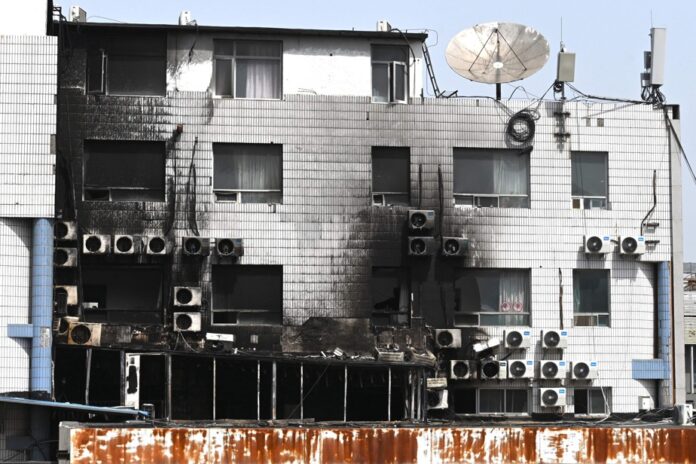(Beijing) A hospital director in China has been arrested after a fire that killed 29 people in his establishment in Beijing, one of the worst disasters to have occurred in the capital for more than two decades, authorities announced on Wednesday. .
This fire on Tuesday forced patients to escape through windows by hanging on sheets and to take refuge by perching on air conditioners on the facade, according to images posted on social networks and quickly censored.
The report was communicated by Li Zongrong, deputy mayor of the district of Fengtai where the hospital is located, and who presented his “sincere condolences” during a press conference.
“ We feel deep remorse and we feel guilty”, he told reporters, also presenting his “ apologies to the people of the whole city ”.
Among the victims are 16 women and 13 men, he said.
The municipal police, for its part, announced the arrest of 12 people, including the director of the hospital and employees of the company in charge of renovation work in the building.
According to a preliminary investigation cited by state television CCTV, the fire was started by “ sparks generated during internal renovation work ”.
These sparks “ignited the volatile substances of the flammable paint on the site”, according to this investigation.
On Wednesday morning, a strong police presence was still visible around the establishment, trying to discourage groups of passers-by who were observing and filming with their phones, AFP journalists noted.
The main entrance to the building appeared mostly intact from the outside, but images of the interior published by business media Caixin show fully charred beds and blackened walls.
On a facade of the hospital complex, we can see windows and walls browned by soot, as well as a broken window.
The alert of a fire starting at Changfeng Hospital was given shortly before 1 p.m. (1 a.m. Eastern Time) on Tuesday and the disaster was extinguished half an hour later, according to local media.
Of the 29 victims, 26 were patients, two were hospital workers and one was a relative of a patient, according to CCTV.
As for the 78 patients still in the establishment, they have been moved to the west wing, according to the same source.
Municipal authorities said 39 people injured in the fire were still hospitalized Wednesday morning.
This fire is the most serious in the Chinese capital for more than twenty years. In June 2002, a fire in an internet cafe killed 25 students.
Images of people seeking protection from the flames sitting on air conditioners installed on the front of the hospital, or clinging to sheets before jumping from the building have been shared on social networks.
“The number one priority is to treat the injured,” said Yin Li, Communist Party secretary in Beijing who visited the scene, according to the Beijing Daily.
Several families of patients say they have lost contact with loved ones, with the missing patients mostly elderly people who have difficulty moving around, the Chinese Youth Daily, an official newspaper, said on Wednesday.
Changfeng Hospital is located in western Beijing, about a 25-minute drive from Tiananmen Square.
On the Chinese social network Weibo, Internet users complained on Wednesday of the online censorship quickly applied around this drama.
“So many people died. It’s a major security incident and oddly it’s not as popular as one celebrity insulting another,” noted one.
“ They are doing a good job of removing (this information) from the most searched terms ” on the social network, quipped another.
Fatal fires are quite common in China, due to poor safety standards and corruption among officials responsible for enforcing them. But they are rarer in Beijing.
In November 2022, 10 people were killed in the fire of a residential building in Urumqi, the regional capital of Xinjiang (northwest), sparking a popular movement of anger against anti-COVID-19 health restrictions, accused of hampered the work of the emergency services.
Also in November, 38 people died in a factory fire in central Anyang, with authorities accusing employees of mishandling.


















